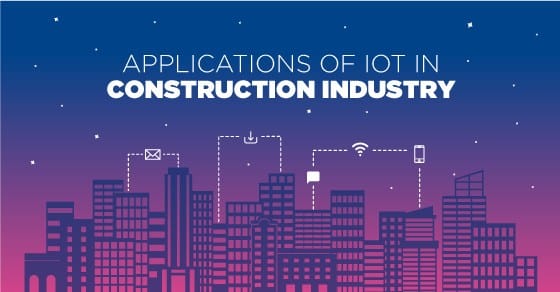IoT in Construction Industry – Top 5 Impact areas of The Internet Of Things
The world is rapidly transforming. With new technologies sweeping in, the entire landscape of our economy and society is being revolutionized as a whole.
With the increased accessibility of the internet, the internet of things has become equally relevant. Since the cost of connecting to the internet is significantly low, most industries are using the internet in their proper spheres. What’s more, most devices these days naturally come built with Wi-Fi and sensors.
Interestingly, the construction industry also has witnessed massive transformation owing to technological advancements such as industrial computers and the widespread use of the internet of things. Whether it is advanced barricades or smart cones- this industry is using IoT to the utmost and there is a substantial impact of IoT in Construction Industry.
But what are some of the significant developments in the construction sector? How exactly has technology impacted this industry? That’s what we are going to assess over the next few sections. As you keep reading, you will have a complete insight into how and where technology is being used in this industry.
Top 5 impacting Areas of IoT in Construction Industry
Smart Cones
If you’ve observed a construction site, it is only likely that you’ve come across the regular orange cones. These cones are traditionally used for indicating a construction work is taking place in the vicinity.
With time and advancement of technology, we now have the SmartCone in place of their traditional variants. These new IoT powered cones are tailored to assist you in staying alive and safe. It is primarily an IoT device or more precisely, a mesh network of multiple devices that carries the required sensors for detecting massive hazards. So, every time there’s a hazard, the SmartCone informs and alerts people about them.
Remote Operation
Any machine that can ensure web connection will be given remote instruction. This is an excellent option as the device is capable of functioning in spots that might be dangerous to the human population. Powered by the IoT, it is also free from all potential risks.
Predictive Analytics
The average systems in the construction industry have significantly benefited from predictive analytics. We are especially concerned about the systems that don’t just feed information but also have the capacity of offering insight into the scheduling concerns, safety stats, or budget outlooks.
Predictive analytics is a combination of multiple techniques like statistics modeling, IoT, and artificial intelligence. It is used for assessing data and making predictions for the future. The ultimate goal of predictive analytics is to develop a new approach to solving problems with data.
This will be done by predicting the various patterns in the existing workflow and underlining the most relevant solutions on board. Predictive systems can easily anticipate impending issues and opportunities, thereby offering project managers the required insight into making important decisions.
Sensors and Wearable Construction Technology
As we are witnessing a steady rise in the introduction and adoption of data-driven technology in the construction industry, we are also likely to see innovations in the way this technology is being utilized for making new efficiencies.
Embedded sensors, for instance, in a fully connected worksite, creates multiple opportunities in collecting and handling data on the safety, overall material performance, and most importantly, the operational workflow.
Smart devices, wearable construction technology along with sensors and cameras, can be used in construction management software for getting better and improved picture in the progress and status of reporting.
This integration will not merely affect the overall flow of the projects but also offer vital data that can be later assessed and even be a part of the operational management. Sensors that can provide information on environmental statistics and structural performance are especially important here.
Enhanced Monitoring
When implemented the right way, wearables can successfully optimize productivity in a job site. Till date, wearables have already made their way in the industry in several ways. The most basic use of technology will monitor the consumption of fuel during idle time, along with GPS tracking and machine hours. This can further assist in making optimal operating methods and ensuring predictive maintenance.
Bottom Line
While these were some of the top ways in which technology has impacted the construction industry, there are others in line that we will possibly witness in the future. Either way, IoT and technology have revolutionized the construction industry to the core.

